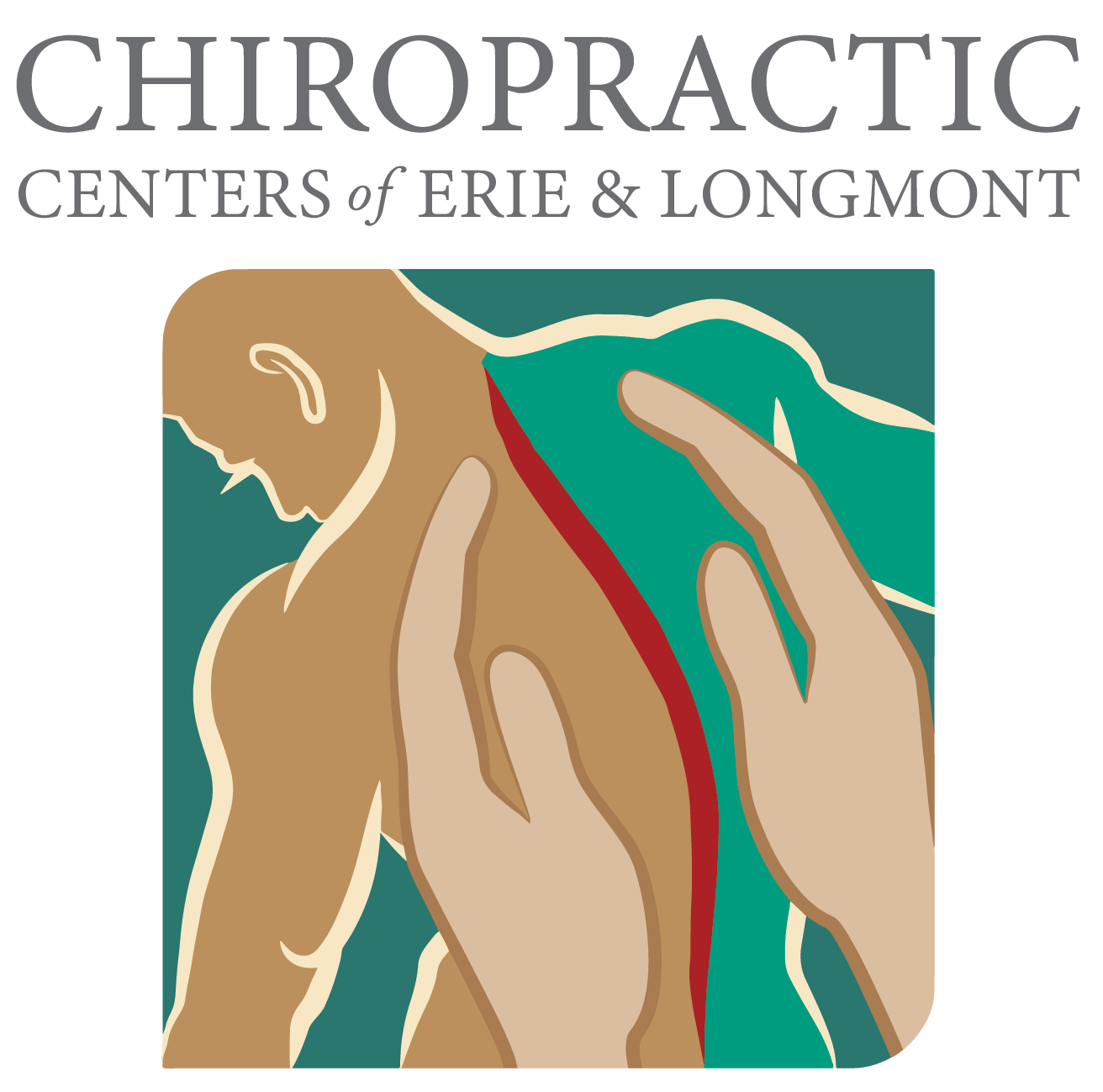Suffering from constant back pain or experiencing frequent headaches? These are more than sheer discomfort; they might be your body’s call for a chiropractic check-up. Let’s delve into the signs that indicate it may be time to see a local chiropractor at the Chiropractic Center of Erie or the Chiropractic Center of Longmont and explore the wonders of spinal health. Ignoring these warnings could lead to long-term damage, adversely affecting your health and quality of life. So, buckle up as we navigate the world of chiropractic care together!
Some signs that indicate you might need chiropractic care include chronic back or neck pain, frequent headaches, limited range of motion, joint pain, muscle stiffness or soreness, or symptoms associated with sciatica. While these symptoms do not necessarily mean you need chiropractic care specifically, it is worth seeing a licensed chiropractor to get a professional diagnosis and treatment plan tailored to your individual needs.
Identifying When You Need Chiropractic Care
Recognizing when it’s time to seek chiropractic care can often be a challenge, as many symptoms and conditions can easily be attributed to other factors. However, there are underlying signs that indicate the need for professional assistance. Understanding these signs can help you take proactive steps toward improved musculoskeletal health.
One of the primary indicators is persistent pain in the neck, back, or joints. If you’re experiencing chronic discomfort that doesn’t seem to subside despite rest or over-the-counter remedies, it may be time to consult a chiropractor. They can assess your condition and provide targeted treatments to address the root cause of your pain.
Another sign is a limited range of motion in your body. If you find it increasingly difficult to perform everyday movements like bending, twisting, or reaching, it may be due to misalignments in your spine or joints. Chiropractors specialize in realigning these structures to improve mobility and alleviate associated pain.
Additionally, frequent headaches or migraines should not be dismissed as mere nuisances. They may be indicative of a misalignment in the neck or spine, which can cause tension and restricted blood flow to the head. Chiropractic adjustments can help relieve these symptoms and enhance overall blood circulation.
Furthermore, if you’ve been involved in a recent auto accident or experienced trauma such as a sports injury or fall, seeking chiropractic care is highly recommended. Even if you don’t immediately notice any major symptoms, underlying injuries could manifest later on and affect your long-term well-being. A chiropractor will conduct a thorough evaluation to identify any hidden issues and provide appropriate treatment before they worsen.
For instance, imagine you’ve recently sprained your ankle while playing tennis. Apart from the obvious pain and swelling, you may also start noticing other areas of discomfort like lower back pain or hip stiffness. This interconnectedness of our body systems is precisely why chiropractic care can be beneficial in addressing not just the immediate injury but also any secondary effects it may have on your overall alignment and function.
Symptoms Signaling a Chiropractic Check-up
When it comes to maintaining optimal musculoskeletal health, being vigilant about any symptoms that may warrant a chiropractic check-up is crucial. While some signs may be more apparent than others, recognizing when your body might benefit from chiropractic care is essential for prompt intervention and prevention of further complications.
One common symptom that should raise awareness is frequent muscle or joint pain. Whether it’s dull and achy or sharp and shooting, persistent discomfort in these areas could indicate underlying musculoskeletal misalignments. Chiropractors specialize in identifying these misalignments and providing appropriate manipulations to restore proper alignment and relieve pain.
For instance, imagine you’ve been experiencing recurring lower back pain after sitting for extended periods at your office desk. Despite trying various stretches and exercises, the discomfort lingers. This could suggest an issue with spinal alignment due to poor posture or prolonged sitting. In this case, seeking chiropractic care can help identify the root cause of your pain and provide targeted adjustments to alleviate it.
Additionally, if you frequently experience tension headaches or migraines that seem to originate from the base of your skull or neck area, it could be a sign of vertebral misalignment or muscle imbalances in the cervical spine. Chiropractors can assess these issues and employ techniques like spinal manipulation or correction and soft tissue therapies to address them effectively.
Other symptoms that may signal the need for a chiropractic check-up include numbness or tingling sensations in your extremities, frequent muscle spasms or cramps, and even digestive issues. These symptoms may often be associated with nerve impingements or imbalances in the body. Chiropractors can utilize specific adjustments to alleviate pressure on nerves and restore proper nerve function, leading to improved overall health.
By keeping an eye out for these symptoms and recognizing their potential connection to musculoskeletal issues, you can take proactive steps toward seeking the care you need. Consulting with a chiropractor will allow for a thorough evaluation of your condition and the development of a personalized treatment plan to address your specific concerns.
Assessing Physical Strain and Muscular Pain
Our bodies are remarkable, adaptable entities that allow us to perform a wide range of activities. However, daily life can take a toll on our physical well-being, leading to strain and muscular pain. While some discomfort is normal, persistent or worsening symptoms may indicate the need for chiropractic care.
Let’s say you spend hours each day working at a desk with poor posture. Over time, this can lead to tension in your neck, shoulders, and upper back. You may start noticing dull aches or stiffness in these areas that don’t go away with temporary relief measures like stretching or over-the-counter pain medication. This could be a sign that your body is experiencing physical strain that requires attention from a chiropractor.
Physical activities and sports can also contribute to muscular pain and strain. Whether it’s intense workouts, repetitive movements, or accidents during athletic endeavors, these exertions can put stress on your muscles and joints. If you’re experiencing localized pain in specific areas of your body, such as your lower back after a weightlifting session or your knees after running long distances, it might be worth seeking chiropractic care.
It’s important to pay attention to these signs of physical strain and muscular pain so you can seek appropriate treatment. The next step is understanding what to expect during your first appointment with a chiropractor.
First Appointment Expectations in Chiropractic Care
Walking into a chiropractic office for the first time might feel unfamiliar, but rest assured that the goal of this visit is to understand your unique needs and develop a tailored treatment plan for you. Here’s what you can typically expect during your initial appointment:
- Medical History Assessment: Your chiropractor will ask detailed questions about your medical history, including any past surgeries, current medications, and previous treatments for musculoskeletal issues. Providing accurate and comprehensive information will help them better understand your situation and devise an effective treatment plan.
- Physical Examination: To assess the extent of your condition, the chiropractor will perform a physical examination, focusing on areas of pain or discomfort. This may involve observing your posture, testing your range of motion, orthopedic and neurologic tests, and applying gentle pressure to evaluate muscle tension and joint mobility.
- Diagnostic Tests (if necessary): In some cases, additional diagnostic tests such as X-rays or MRI scans may be required to gain further insights into your condition. These tests can help identify any underlying structural abnormalities or provide a more accurate diagnosis.
- Treatment Plan Discussion: After gathering all the necessary information, your chiropractor will discuss their findings with you and propose a personalized treatment plan. This plan may involve spinal adjustments, therapeutic exercises, massage therapy, nutritional guidance, or recommendations for lifestyle modifications.
Think of this initial appointment as laying the groundwork for your chiropractic journey. Just like a skilled architect who carefully studies the landscape before designing a building, your chiropractor needs a solid understanding of your body’s condition to develop an effective treatment strategy.
Armed with this knowledge about what to expect during your first appointment, you can approach your visit with confidence and an eagerness to find relief from your discomfort.
What to Ask Your Chiropractor
Seeking chiropractic care can be a significant decision in your healthcare journey. To ensure that you receive the best possible treatment and clearly understand the process, it’s essential to ask your chiropractor the right questions. Here are some important inquiries to make during your initial consultation:
1. What is your experience and expertise? Inquire about the chiropractor’s qualifications and years of experience. Understanding their background will give you confidence in their ability to provide effective treatment.
2. What techniques do you specialize in? Chiropractors utilize various techniques, such as hands-on spinal adjustments, activator technique, traction which can be either mechanical or manual, massage therapy, or soft tissue manipulation, and many other techniques. Knowing which techniques they specialize in will help you understand how they can address your specific concerns.
3. Can you explain the proposed treatment plan? Ask for a detailed explanation of the recommended treatment plan, including potential outcomes and any associated risks. Understanding the approach will allow you to make an informed decision about your care.
4. Are there any lifestyle changes or exercises I should incorporate? Your chiropractor may provide recommendations on lifestyle modifications, stretches or exercises that can support your treatment progress. Understanding these suggestions will empower you to take an active role in your healing process.
5. Do you accept insurance or offer payment plans? Financial considerations are important when seeking chiropractic care. Inquire about insurance coverage options and whether the clinic offers payment plans or other alternatives to make treatment more affordable.
Remember, open communication with your chiropractor is vital for a successful and positive experience. Don’t hesitate to ask any additional questions or express any concerns you may have during your consultation.
Now that we know what questions to ask our chiropractor for a better understanding of their expertise and proposed treatment plan, let’s explore the diversity in chiropractic treatment techniques.
Diversity in Chiropractic Treatment Techniques
Chiropractic care encompasses a diverse range of treatment techniques that aim to address various musculoskeletal issues and promote overall well-being. It’s important to recognize this diversity and understand the different approaches chiropractors may take. Here are some notable treatment techniques commonly used by chiropractors:
1. Spinal Adjustments: This is perhaps one of the most well-known chiropractic techniques. It involves applying controlled force to specific areas of the spine to correct misalignments (subluxations) and restore proper function to the nervous system.
2. Soft Tissue Manipulation: Chiropractors often employ soft tissue manipulation techniques like massage therapy, myofascial release, or trigger point therapy. These techniques help relieve muscle tension, improve circulation, aid the body in accepting the adjustments, and reduce pain.
3. Active Release Technique (ART): ART is a manual technique that focuses on identifying and treating soft tissue adhesions, which can cause pain and restrict mobility. By applying targeted pressure and movement, ART aims to break up scar tissue and restore normal tissue function.
4. Cox Flexion-Distraction: This technique involves gentle spinal decompression using a specialized chiropractic table. It can be particularly beneficial for conditions such as disc herniation, sciatica, or spinal stenosis.
5. Instrument-Assisted Adjustments: Some chiropractors use handheld instruments to deliver precise adjustments to the spine or other joints. These instruments allow for controlled force application without high-velocity thrusts, making them suitable for patients who prefer a gentler approach.
The diversity in chiropractic treatment techniques ensures that individuals can find an approach that suits their preferences and addresses their specific needs. A skilled chiropractor will assess your condition thoroughly and determine which combination of techniques is most suitable for you.
For instance, if you suffer from chronic lower back pain due to a herniated disc, your chiropractor may utilize a combination of spinal adjustments, soft tissue manipulation, and exercises tailored to strengthen the supporting muscles.
Understanding the diverse techniques available allows you to have informed discussions with your chiropractor and actively participate in your treatment plan. Now, let’s explore the impact of chiropractic care on health and wellness.
The Impact of Chiropractic Care on Health & Wellness
Chiropractic care has emerged as a holistic approach to improving overall health and wellness. Through spinal and extremity evaluations and adjustments, chiropractors can alleviate aches and pains, improve mobility, and enhance the body’s natural healing abilities. But what exactly is the impact of chiropractic care on our health and wellness?
One significant impact of chiropractic care is its ability to provide pain relief without invasive surgery or drugs. Chronic back pain, for example, is a common condition that affects millions of people worldwide. Traditional treatment methods often involve medication or even surgical intervention, which can be costly and carry risks. Chiropractors, however, focus on addressing the root cause of the pain by realigning the spine through gentle adjustments. By targeting misalignments that may be causing discomfort or outright pinching over the nerve itself, chiropractors can help alleviate pain naturally.
Imagine suffering from persistent headaches that impede your daily life. While there could be various causes for these headaches, such as dehydration or malnutrition, misalignment in the neck or spine could also be a contributing factor. Chiropractors are trained to identify such misalignments and provide adjustments to relieve tension and improve blood flow to the brain. This can lead to a significant reduction in headache frequency and severity over time.
Moreover, chiropractic care can have a positive impact on musculoskeletal alignment issues that lead to muscle and joint pain. Misalignments in the spine can cause imbalances throughout the body, resulting in discomfort and restricted movement. Through spinal manipulations and adjustments, chiropractors aim to restore proper alignment and function, facilitating improved blood flow and nerve conductivity. This helps relieve muscle tension and joint inflammation, alleviating pain while enhancing mobility.
Another crucial aspect of chiropractic care is its role in promoting good posture and preventing future aches and pains. In today’s modern lifestyle where many individuals spend extended periods sitting at desks or hunched over electronic devices, poor posture has become increasingly prevalent. Over time, this can lead to chronic pain in the back, neck, and shoulders. Chiropractors can help ensure proper spinal alignment and provide guidance on ergonomics and exercises to strengthen the supporting muscles, ultimately improving posture and reducing the risk of future issues.
Consider a scenario where an individual’s job requires them to sit for long hours each day. Without proper awareness and attention to maintaining good posture, they may develop discomfort and stiffness in their upper back and neck. Regular chiropractic care can not only relieve the existing pain but also educate individuals on how to improve their posture and prevent further issues from developing.
Furthermore, chiropractic care can have a positive impact on overall body function and performance. By realigning the bones and joints, chiropractors help enhance the range of motion, allowing individuals to move more freely and engage in physical activities with less difficulty or discomfort.
Additionally, chiropractors can provide guidance on other aspects of health such as exercise routines, nutrition advice, and stress relief techniques. A comprehensive approach is often taken to address not just physical ailments but also emotional well-being. By incorporating these elements into chiropractic care, individuals can experience a more holistic improvement in their overall health and wellness.
In conclusion, chiropractic care has a profound impact on health and wellness by addressing various conditions and promoting overall well-being. Through gentle adjustments, it offers natural pain relief, improves musculoskeletal alignment for reduced pain and improved mobility, enhances posture to prevent future issues, and provides guidance on exercise routines, nutrition, and stress management. Embracing chiropractic care as part of our healthcare routine allows us to prioritize our physical and emotional well-being while aiming for optimal health.
Call a Chiropractor!
If you’re interested in seeing a chiropractor or getting a chiropractic adjustment, visit us at one of our offices in Erie or Longmont. The Chiropractic Center of Erie and Chiropractic Center of Longmont treat the body holistically with our award-winning treatment process which can include Dry Needling when requested. We have been voted “Best of the West” eleven times and we aim to help your body achieve and maintain optimal performance.
We specialize in treating patients suffering from spinal pain and many other maladies and have helped several patients find relief without the need for surgery. If you’d like to learn more about chiropractic care in Longmont or Erie or have questions about what to expect during your first chiropractor visit in Erie or Longmont, call our offices today at 303-828-3000 or 303-772-1950!







